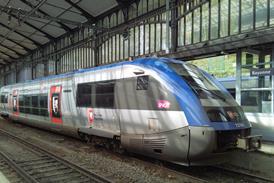Book review
AFRICA: Ever since it opened, the fortunes of the 1 857 km Tanzania-Zambia Railway have at best been mixed. Today, the line is suffering badly for lack of revenue from Zambian copper traffic - its original raison d’être - but moves are underway to revitalise the ailing line.
When Railway Gazette International reported on Tazara’s completion in 1975, we remarked that the line would have to rely on traffic generated along its own route if the expected mineral hauls did not materialise.
Just how important local business became emerges in a remarkable book by US author Jamie Monson, Professor of History at Carleton College in Minnesota. Africa’s Freedom Railway is a fascinating study of Tazara and its role in changing lives and landscapes in Tanzania. Painstaking detail and personal interviews provide what is undoubtedly an accurate account of the issues that surround the line.
If ever there was a political railway, Tazara surely qualifies for top slot. Built with Chinese funding and expertise at the time of the Cold War, and during China’s Cultural Revolution, it was seen by western interests as a ‘Red Guard Line Chugging into Africa’, as the Wall Street Journal described it in 1967.
With China again heavily engaged in African infrastructure projects, Tazara remains a potent symbol of its relationship with the continent. Monson notes that Tanzania was the only African country to host the Beijing Olympic torch relay in April 2008, and the starting point was Tazara’s passenger terminal in Dar es Salaam.
Monson sees Tazara primarily as a development railway that opened up trading and farming communities in a belt across Tanzania. She tends to ignore the railway’s role as a route for mineral exports, maybe because of its failure to handle this traffic - for political or other reasons.
Perhaps the most extraordinary omission from the book is photographs. It may be that Monson was restricted in capturing images of this enigmatic railway. She reminds readers that Tazara ‘was an especially important target for sabotage because its demise would leave Zambia’s economy dependent upon the southern railway route through Rhodesia’, noting that Zambia had no other transport alternative for three months in 1979 when Tazara’s Chambeshi bridge was blown up twice. Villagers along the route were encouraged to report the presence of unknown people to local administrative leaders, she says, while her own research was ‘made more difficult by the secrecy and suspicion of outsiders that enveloped the project from its inception’.
The railway’s future hinges on further donations or loans to restore it to good order - and on that depends the quality of life for the thousands who live along the route.
ISBN 978-0-253-35271-2. $39·95 from Indiana University Press, 601 North Morton Street, Bloomington, IN 47404-3797, USA.



































